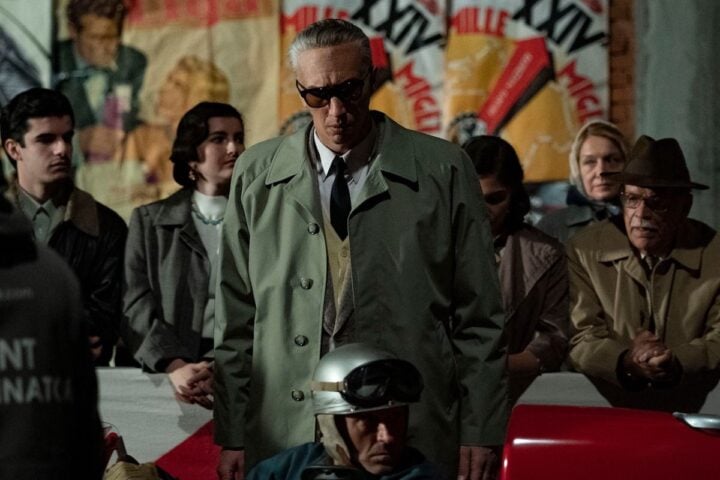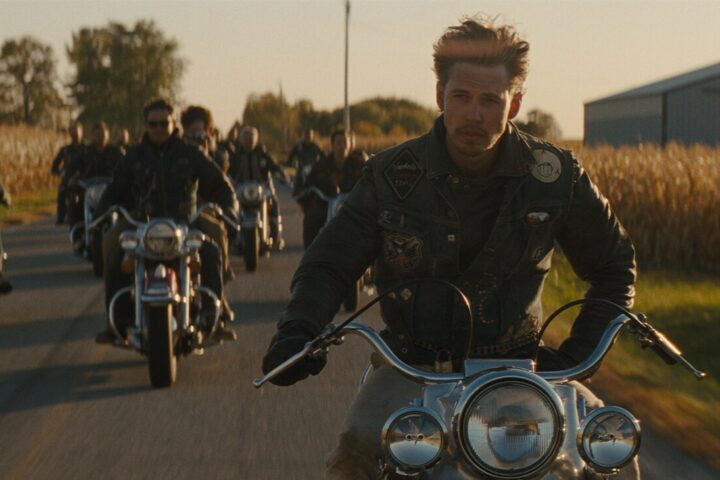Absence is at the heart of Tunisian director Kaouther Ben Hania’s cleverly constructed and sneakily powerful fiction-documentary hybrid Four Daughters. In the opening images, we see a woman, Olfa, and her two daughters, Eya and Tayssir. Before we can even wonder where the other two daughters implied in the title might be, Hania informs us via voice over that the two eldest, Rahma and Ghofrane, were “devoured by the wolf.”
The meaning of that phrase isn’t revealed until the third act of Ben Hania’s film. But before we get there, Hania tells the story of how and why those two daughters were compelled to abruptly leave home—fracturing a family that, now eight years later, is still recovering—by employing two actors, Nour Karoui and Ichrak Matar, to play Rahma and Ghofrane, respectively, and another, Majd Mastoura, to play various male figures. And in certain scenes that are especially harrowing, a fourth actor, Hind Sabr, even steps in to play Olfa herself.
While Four Daughters is a tale of abuse and radicalization, Hania’s approach, which merges the past and present and blurs the line between reenactment and truthful representation, explores the nature of those horrific experiences in ways that extend far beyond mere regurgitation of facts. In a particularly canny move, Hania never presents reenacted sequences as standalone scenes in their “finished” form, instead using the mostly unrehearsed collaborations between Olfa, Eya, and Tayssir and the actors working with them as the raw material for her film.
This tactic lends the film a startling rawness, and as the actors are forced to confront the extreme, often disturbing actions that their characters commit, Olfa, Eya, and Tayssir continue to discover more about themselves and their own tumultuous emotions as they relive some of the most painful moments of their lives. As Olfa is always on set, and frequently in the frame as Sabr plays her, she’s forced to deal with her own culpability in real time, whether through revelations she makes on her own or Sabr questioning why she was so strict with her daughters.
It’s the unique spirit of this collaboration—not only toward getting realistic performances, but plumbing the motivations and emotions of everyone involved—that makes Four Daughters so compelling. And because it’s so open about its behind-the-scenes process, we’re witness to how the artifice of performance and reenactment enhances, rather than diminishes, the depth of emotions of Olfa’s story. Indeed, the lack of a scripted or pre-recorded nonfictional narrative creates something akin to what Werner Herzog has deemed “the ecstatic truth.”
In one especially harrowing moment, Mastoura storms off set during a reenactment of Eya’s attempted rape by her mother’s boyfriend, claiming that he thinks the scene is too harmful to Eya. In a revealing exchange, Eya says directly to the camera that she needs him to do the scene for her, as these reenactments are actually a means for her to exorcise her pain. Similar moments—though perhaps none as effective as this one—also touch on the ethics of documentary filmmaking and the limits of representation, lending the film a fascinating metacommentary that courses beneath its emotional storytelling surface.
Despite the gravity of these scenes, and the eventual discovery that Rahma and Ghofrane were radicalized, Four Daughters otherwise treats its material with a surprising levity. The incredibly strong-willed Olfa and Eya, in particular, are quite funny, often cracking jokes at what many might consider inappropriate times. It’s likely, at least in part, as a defense mechanism, and such moments provide great insight into who these women are and make a film that could easily, even justifiably, have wallowed in misery a bit less of a drudge.
When we get to how Rahma and Ghofrane were radicalized and what’s happened to them since they left home in 2015, though, Four Daughters takes on a more somber and meditative tone. This final stretch is a constant punch to the gut for the way that Ben Hania details how drastically and quickly Rahma and Ghofrane went from seemingly ordinary, if slightly troubled, teens to wearing niqābs and trying to recruit their eight- and 10-year-old sisters to become jihadists. Perhaps because of the distancing effect of reenactments and the humor that helped offset much of the adversity earlier on, the final 20 minutes are disarmingly affecting.
It’s only then that Hania shows us actual news and talk show footage that informs us of Rahma and Ghofrane’s fate. Here we see the truth of Olfa and her two younger daughters’ experiences colliding with that of Rahma and Ghofrane’s, and in a juxtaposition of cinematic addresses that’s unbelievably chilling, the audience is finally confronted directly with the ghosts that have haunted the central trio throughout Four Daughters. It appears Olfa, Eya, and Tayssir have, for the most part, recovered and moved on, but with those final images, it’s not hard to imagine people leaving the theater not feeling a little bit haunted themselves.
Since 2001, we've brought you uncompromising, candid takes on the world of film, music, television, video games, theater, and more. Independently owned and operated publications like Slant have been hit hard in recent years, but we’re committed to keeping our content free and accessible—meaning no paywalls or fees.
If you like what we do, please consider subscribing to our Patreon or making a donation.



